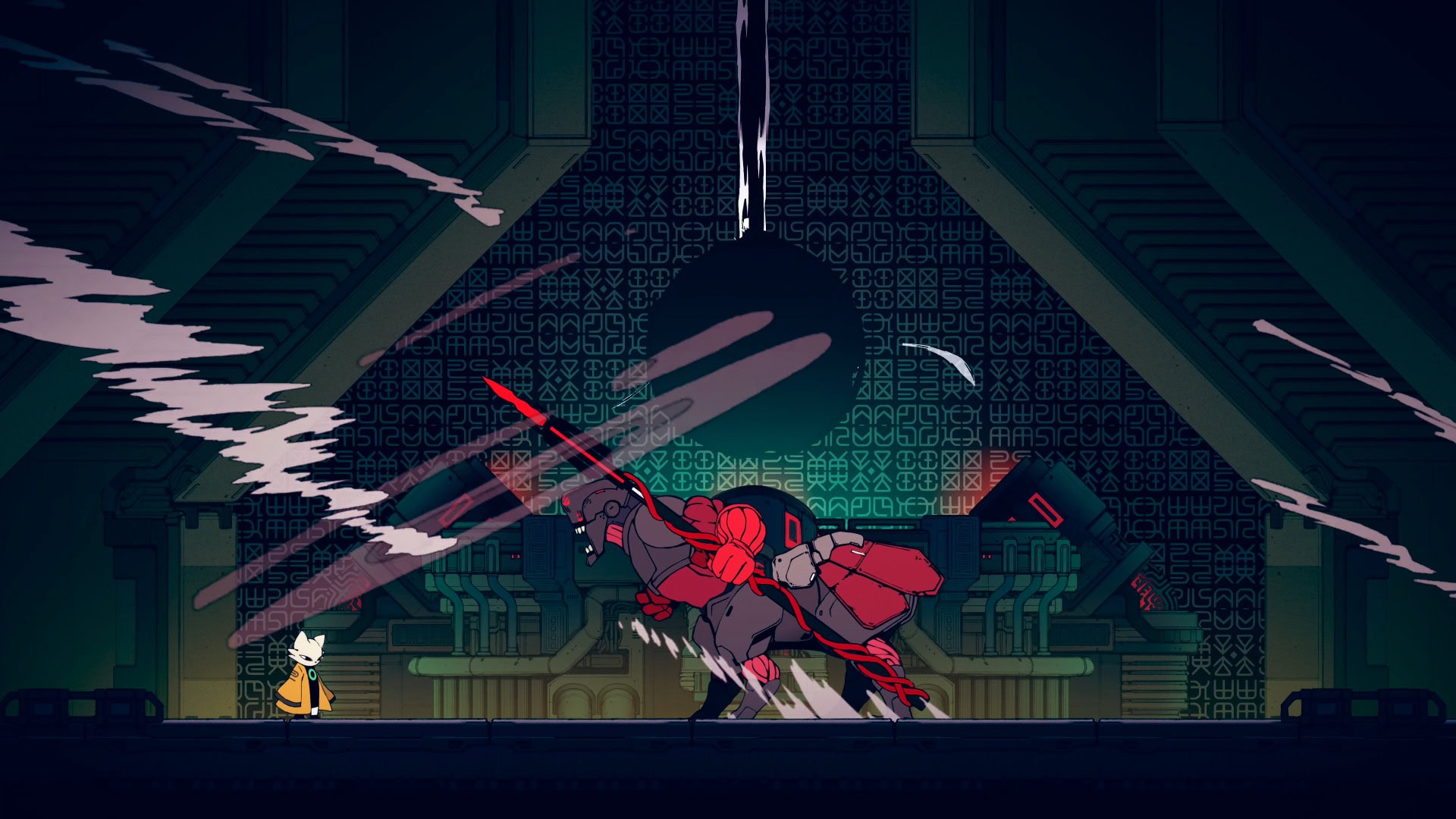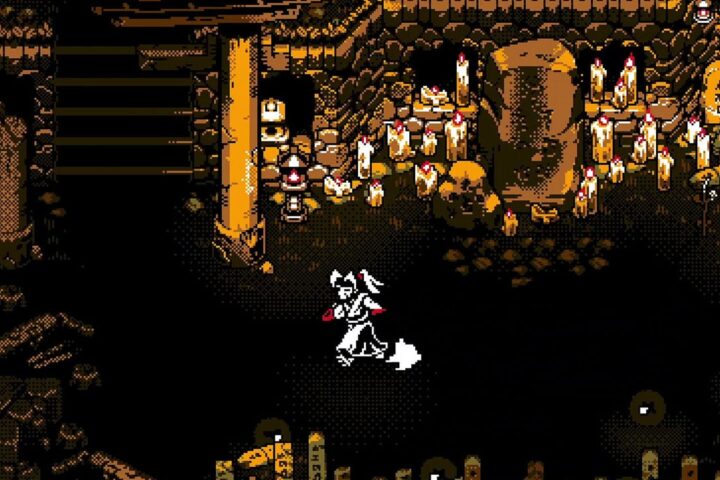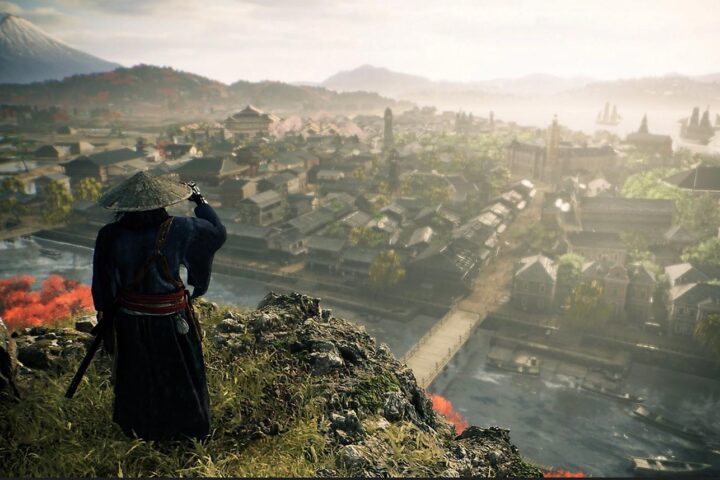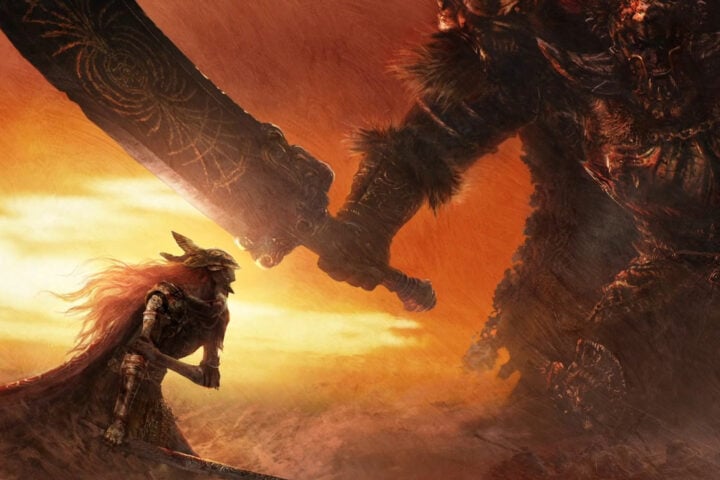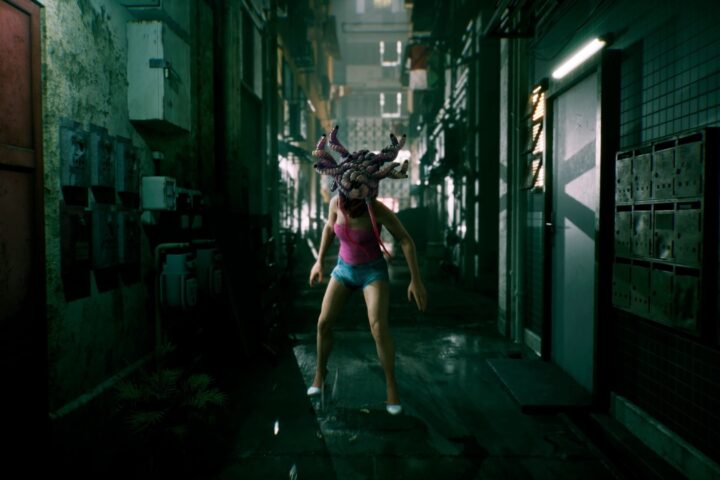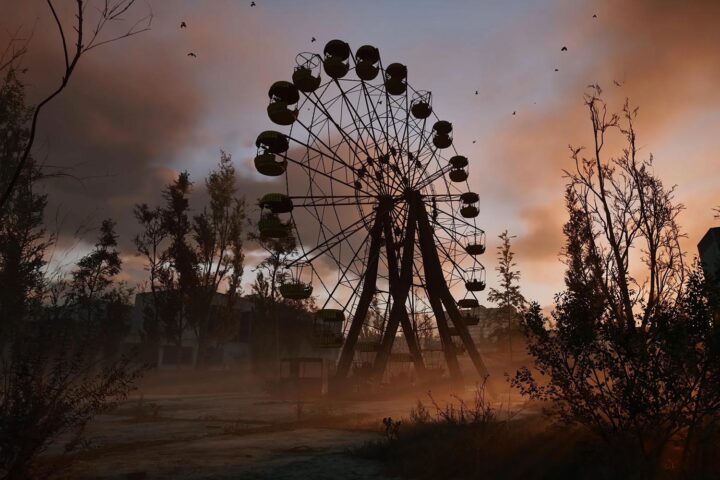Filled as it is with anthropomorphic cats, acrobatic clashes, and ruminations on Taoism, Nine Sols has the air of a wuxia fable. Taiwanese studio Red Candle Games’s atmospheric Metroidvania begins centuries after a remarkably advanced feline race, afflicted with an untamable genetic disease, fled the planet they had bled dry, only to discover fatal flaws in their exit plan. As Nine Sols explores the departure’s fallout, it rejects neat moralization—choosing instead to wrestle with, and embrace, the unfathomability of fate and mortality. The result is mechanically, emotionally, and philosophically electrifying.
You assume control of the martial artist and alchemist Yi, a former member of the governing council who orchestrated the doomed exodus, as he hunts down the technocrats and patricians he used to work with. Yi’s brutal quest for revenge takes him through the ruins of his people’s false utopia, a striking fusion of sci-fi and Eastern mythology, where factories and warehouses cast oppressive shadows over abandoned residential districts, lakes, and grottos. Vicious guards continue to patrol these derelict landscapes, driven by orders that have outlasted their purpose.
Combat, in the vein of Sekiro: Shadows Die Twice, generates an entrancing sense of rhythm with its emphasis on parries and explosive counterattacks. Defeating Nine Sols’s riveting, punishing bosses demands that you see battle through Yi’s perspective: as both an art and a science. You must study your foes, internalize subtle cues in their movements, fend off blows with lightning precision, and capitalize on even their briefest missteps. There are a handful of frustrations—including the familiar difficulty of learning multi-phase fights when preliminary stages have abundant HP, and some instances where tedious runbacks or loading screens separate save points from arenas—but they wither before the thrills of Yi’s rousing duels.
Nine Sols features a Story Mode setting that adds sliders to adjust the damage that Yi receives and deals, helping ease barriers to the game’s alluring world and characters. On the rare occasion that Yi meets someone who isn’t trying to kill him, they often plant roots in the pavilion that serves as his home base. The eclectic community that grows there, from a charmingly heterodox robot to a (regularly vindicated) conspiracy theorist, grants intriguing, touching, and surprisingly funny glimpses into the land Yi left behind and the one he strives to redeem. Nine Sols understands the centrality of this context to Yi’s journey, and even shapes its fast travel system to provide a steady drip of it: To teleport between points on the map, you first have to apparate back to the hub, where you will, perhaps, connect with friends while passing through.
At the heart of the pavilion is Shuanshuan, a parentless human boy who adores Yi and gladly receives souvenirs from his hero’s adventures. Yi leverages these items to educate his ward with unblinking honesty and, in time, poignant devotion. If you gift Shuanshuan the blade of a defeated foe, he later demonstrates it in action—by wielding it to prune a bush. “All you said was that I was going to learn how to use it,” Shuanshuan says, when Yi notes that the weapon was meant for self-defense. “Who looks at a knife and just assumes it’s used to stab other people?” The child, like all the wise, weathered folk around him, still has many lessons to learn.
This game was reviewed with code provided by Red Candle Games.
Since 2001, we've brought you uncompromising, candid takes on the world of film, music, television, video games, theater, and more. Independently owned and operated publications like Slant have been hit hard in recent years, but we’re committed to keeping our content free and accessible—meaning no paywalls or fees.
If you like what we do, please consider subscribing to our Patreon or making a donation.

